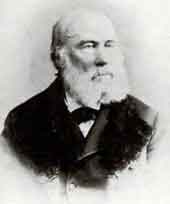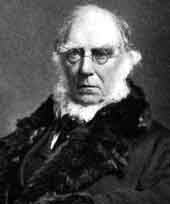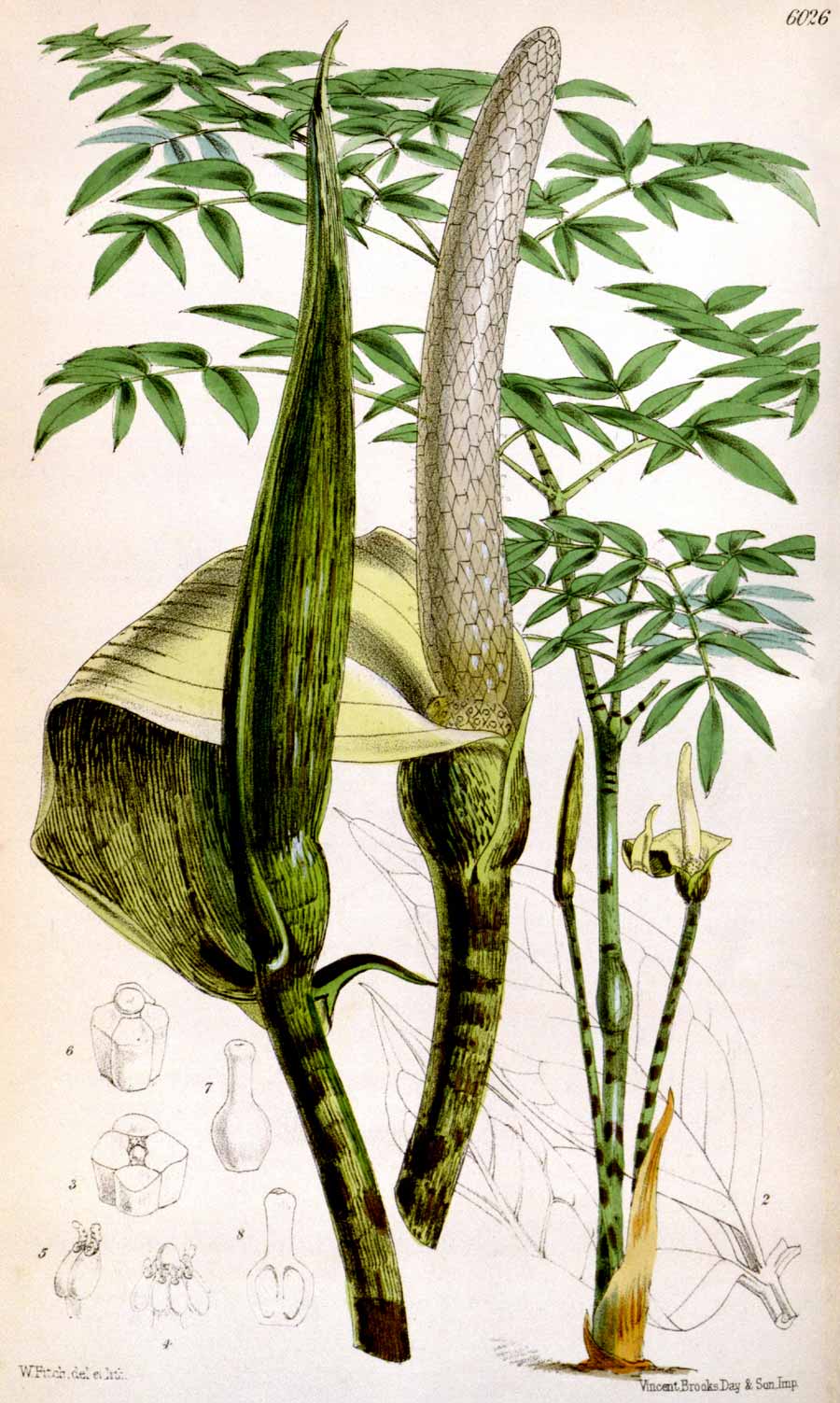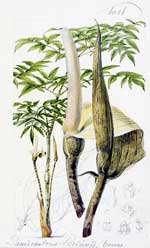Zamioculcas Boivinii
(Synonym of Gonatopus boivinii)
Text page
by Joseph Dalton Hooker

|
Joseph Dalton Hooker (text) and Walter Hood Fitch (plate): Zamioculcas Boivinii.
Tab. 6026 from Curtis's Botanical Magazine, Third Series, Vol. 29 (1873)
Tab. 6026.
ZAMIOCULCAS BOIVINII.
Native of Eastern Tropical Africa.
—————————
Nat. Ord. AROIDEÆ.—Tribe ORONTIEÆ.
Genus ZAMIOCULCAS, Schott ; (Dcne. in Bull. Soc. Bot.
France, vol. xvii. p. 321).
——————————————
ZAMIOCULCAS Boivinii ;
foliis 3-ternatim sectis, foliolis ovato-lanceolatis acuminatis sessilibus
v. breviter petiolatis, petiolo tereti medio nodoso-incrassato, pedunculo gracili,
spathæ lamina lanceolata acuminata intus pallide straminea, extus luride viridi
lineolis fuscis creberrime striolata.
ZAMIOCULCAS Boivinii, Dcne. l. c. p. 322.
——————————————
When last year I figured in this Magazine the curious Z. Loddigesii (Tab. 5985), and called attention to the fact of a species with bipinnate leaves having been described by my friend M. Decaisne, I little expected that living specimens of this were then actually on their way to Kew from its indefatigable correspondent Dr. Kirk, H.B.M. Vice-Consul at Zanzibar, who procured them from the coast opposite to that island. Further, on referring to the Herbarium, I find under the genus Anchomanes dried specimens of this same Zamioculcas, collected by Dr. Kirk himself, when accompanying Dr. Livingstone on his second expedition, in 1861, on the banks of the Shire river, opposite to the rapids of Zedzani. As a species this differs widely in habit from Z. Loddigesii, bearing apparently only a single leaf, whose petiole is not so remarkably clavate at the base, though similarly swollen into a node at the middle ; the peduncle is very much longer and more slender, the spathe much larger, longer, and more lanceolate, and the spadix of a very different form ; the filaments also are different, the anthers open by pores, the ovary has a distinct style, and lastly, instead of being all over pure bright green, the peduncles, petioles, and spathe externally of Z. Boivinii are of a lurid green,
fasciated with pencilled streaks of greenish or purplish brown, giving a singularly lurid and snake-like look to the plant. Considering all these points, it is perhaps doubtful whether Z. Boivinii should not be regarded as the type of a distinct genus or sub-genus, to which the name Gonatopus, in allusion to the knee-like swelling on the petiole, might be applied.
DESCR. Rhizome short, dilated. Leaf in our specimen solitary, radical, enclosed at the base along with the peduncle in a few short membranous acute sheaths, two to three feet long, erect ; blade triangular-ovate, triternately pinnate ; petiole as thick as the little finger, with one swollen oblong node in the middle, and as well as the slender rachis, partial petioles, and peduncles of the spathes, of a dull green, crossed by irregular bands of brownish striæ ; pinnæ opposite, sessile or shortly petioled, ovate-lanceolate, acuminate, membranous, faintly nerved. Peduncles two in our specimen, one on each side of the petiole, shorter and much more slender than it is, cylindric, terete. Spathe six inches long, ovate-lanceolate from a short sheathing base that embraces the female flowers, long-acuminate ; blade revolute, dirty yellow-green outside, with six to eight obscure dark nerves and innumerable dark striæ. Spadix equalling the spathe ; female portion one inch long, subglobose ; male portion cylindric, four inches long by one-third of an inch broad, yellow, terete, densely clothed with yellow hexagonal flowers, whose truncate perianth-segments give it an even surface. Perianth-segments four, prismatic, thick, truncate, closely embracing the organs of fructification. Male flower :—stamens four, surrounding a rudimentary pistil, filaments very short, broad ; anthers included, incumbent, didymous, cells opening by large terminal pores. Female flower :—ovary obovoid, 2-celled, contracted into a columnar style with a capitate stigma ; ovules ascending from the septum, solitary in each cell, micropyle inferior.—J. D. H.
——————————————
Fig. 1, Reduced figure of plant ; 2, pinnules of the natural size :--3, male flower ; 4, stamens and rudimentary ovary ; 5, stamen ; 6, female flower ; 7, pistil ; 8, vertical section of ditto :—all magnified.
April 1ST, 1873.
|
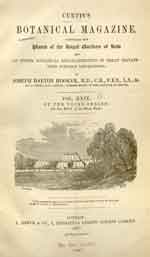
Curtis's Botanical Magazine
Title Page of Vol. XXIX.
of the Third Series (1873)
© Missouri Botanical Garden
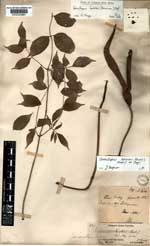
Zamioculcas boivini
(Syn. of Gonatopus boivinii)
(originally labelled as "Anchomanes")
Kew Herbal Nr. K000345881 (1861)
© Royal Botanic Gardens, Kew
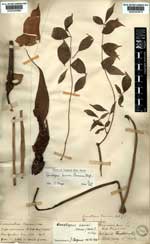
Gonatopus boivinii
Kew Herbal Nr. K000345879 (1861 ?)
together with K000345880 (1872)
© Royal Botanic Gardens, Kew
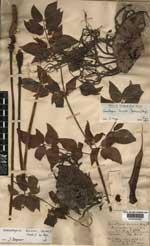
Gonatopus boivinii
Kew Herbal Nr. K000345882 (1873)
© Royal Botanic Gardens, Kew
|
